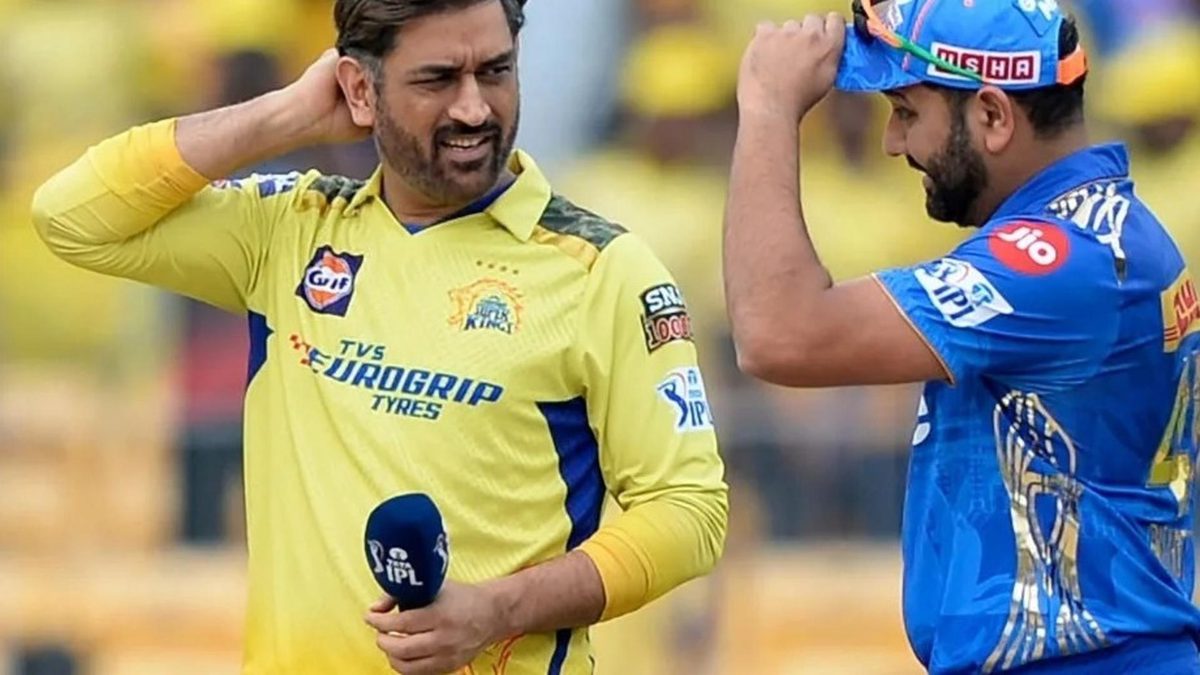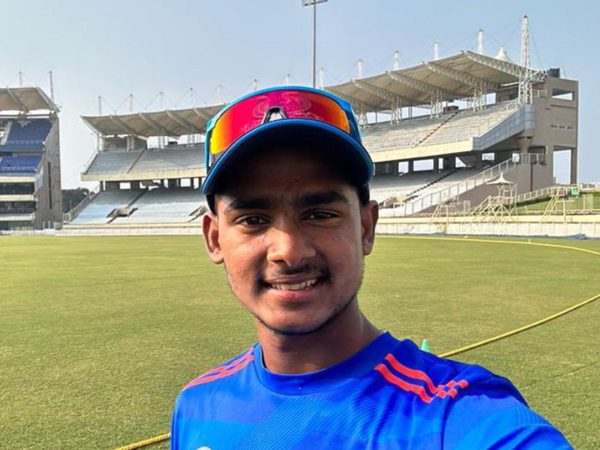
For as long as anyone can remember, the IPL's marketing has been built around the 'Big Three' of Indian cricket. But how long can this sustain the league?
Turning 18 is a defining moment for most teenagers, who have to make career choices that would go on to shape the rest of their lives. In its 18th season, the IPL stands at a similar crossroads, facing a decision that could dictate its future.
The league has evolved over the years – tactical innovations have been made; data is being used at a more granular level; and franchise dynamics have all seen remarkable progress. Yet, despite these advancements, the IPL still markets its veterans more than its cricket.
Most CSK fans would prefer their favorite player (guess who?) hitting a six or two in a loss than not batting at all in a win – as was the case on Saturday afternoon against Delhi Capitals. The entire Mumbai Indians fandom had been up in arms against their own captain last season because he had replaced Rohit Sharma, Mumbai cha raja. RCB, unlike CSK and MI, are yet to win an IPL trophy, but are the third-highest valued team according to multiple reports. You know why.
Broadcasters often make match posters placing Rohit, Kohli, and Dhoni at the forefront of their respective teams, ignoring their actual captains, whom a sizeable portion of the IPL’s target audience might not be able to name. Teams are happy fielding half-fit veterans who might be detrimental to their cause on the field but are still doing wonders to their brand value.
This fixation on certain individual cricketers is neither intrinsically wrong – after all, it’s just a sport people watch to connect with stories and get entertained – nor without reason. Apart from having legendary international careers, they have managed to strike connections with local and national fans at a level that goes beyond just cricket. A major section of IPL viewers has grown up watching these players transform into the legends they have now become. Sticking to one team for as long as they have has played a big role as well. However, this adoration, bordering on obsession, has now reached a tipping point.
The IPL's big question – how long can you milk a cash cow?
Rohit, Kohli, and Dhoni are 37, 36, and 43. Each of them has retired internationally, from the format the IPL is played in. And each is on the last legs of their careers (well, Dhoni has been on them for several years now). Instead of preparing for a smooth transition to the next generation of stars, the IPL is still trying to squeeze every last drop of traction from the Big Three.
“It actually comes from our learnings from ICC events where India matches have a spike, non-India matches are rated not as high but because the India matches do well, they also work,” Sanjog Gupta, CEO, Sports, Jio Star recently told Hindustan Times. “We have created an equivalent of India matches in the IPL and those are the bigger events. The way we will market and build up a MI-CSK match will not be the same as a PBKS-CSK match.”
It’s understandable why. These players still “own the streets”. Their declining fitness (barring Kohli) and returns do not make their fans love them any less (maybe slightly less in Dhoni's case now). Instead, it adds a nostalgia element to the whole saga.
But the Dhonis, Rohits and Kohlis will stop playing one day. And that day is coming sooner than the IPL might like. What then? Will brands and sponsors still flock to the tournament like bees to a honeypot? Will the “more popular teams” still drive the same viewership numbers? Will the business model of the IPL change such that cricket becomes the focus over cricketers?
The warning signs are already there. In 2022, IPL viewership dropped by nearly 18 per cent after a major player reshuffle and the introduction of two new franchises. If mere team changes could cause such a dip, what happens when the three biggest faces of the league walk away for good?
Also read: Is the IPL running the risk of being too complacent?
In 2013, IPL had faced a similar scenario with Sachin Tendulkar and Rahul Dravid retiring. The league lost a small portion of fans from the “I switch off my TV when Tendulkar gets out” era. But Dhoni was already a double-World-Cup- and IPL-winning captain by then, Kohli had established himself as the next big thing, and Rohit was starting to come good. The IPL had readymade replacements available to be its face.
Immediately after retiring as players, Sachin and Dravid returned to the ecosystem in coaching/mentorship roles. But they were well and truly pushed to the background as narratives started to be woven around the next generation of players. Currently, there’s very little indication of that happening.
In the Shubman Gill, Rishabh Pant, Shreyas Iyer, Sanju Samson, Hardik Pandya, and Ruturaj Gaikwad, among others, there are enough young stars, probably more than there were back in 2013, to build narratives and marketing campaigns around. But none are anywhere close to the level of the Big Three.
A quick check of the Instagram followers of these players paints a vivid picture.
But herein lies the opportunity for the IPL.
IPL's 'Gen Bold' needs to take the spotlight
As Michael Jordan’s career neared its end, many feared the NBA would lose its mass appeal. But instead of waiting for him to retire, the league actively built rivalries and narratives around its next generation of stars in Kobe Bryant, Shaquille O’Neal, Tim Duncan, and Lebron James, of which LeBron became the unofficial successor of Jordan as the face of the NBA.
Instead of putting all their eggs in the Dhoni-Rohit-Kohli basket, the IPL can promote the multiple young talents that are currently there regionally as well as across the country, create and sell compelling next-gen (whom the broadcasters already call 'Gen Bold') rivalries of players potentially fighting for the same spot in the national side: Gill vs Gaikwad, Pant vs Samson, Abhishek vs Jaiswal, and so on; and start letting these players take the centre stage while the Big Three are there.
Perhaps none of them has the kind of pan-India fandom that Kohli or Dhoni had when Sachin and Dravid retired. The only natural solution to that problem is consistent performances at the international level. But the IPL, the players, and the franchises can surely come together to build stronger local identities for them. Incentivising teams to not let go of their young big stars ahead of auctions will also be important to maintain continuity.
The franchises also have the opportunity to take initiative and form their brands around the cricket they play rather than the cricketers that play for them. Sunrisers Hyderabad have already taken the lead on this front, with loyalists thronging in orange genuinely believing that their team will score 300 on any given day.
While Kohli is still fit and contributing enough for his presence to not have a negative impact on the field, the same can’t be said for Rohit or Dhoni. In two of the three matches he has played so far this season, Rohit has been subbed in as an Impact Player, only to make 0 and 13. He missed the fourth due to injury. From his last 10 games, he has scored only 141 runs at a strike rate of 121. Dhoni's entry points have been dictated by how his knee feels on the particular day, as admitted by CSK head coach Stephen Fleming. Often, winning matches has looked like a secondary objective to them. Both were retained by their franchises ahead of a mega auction season, one for 16.3 crores and another for 4 crores as an “uncapped” player.
Despite the popularity and cult following these players bring, it’s hard to make sense of how these optics are good for the brand of the IPL in the long run. That the system isn’t just failing to prepare for a transition, but actively resisting it so far, is a worrying sign.
The place the IPL occupies in the international cricket calendar demands that it take itself more seriously and start preparing for the imminent post-Big Three adulthood. Or it can continue in the same vein and risk stagnating as other leagues with fresher narratives rise to prominence. Either way, like most 18-year-olds, the IPL has a major career choice to make, one that can go on to shape the rest of its life.








